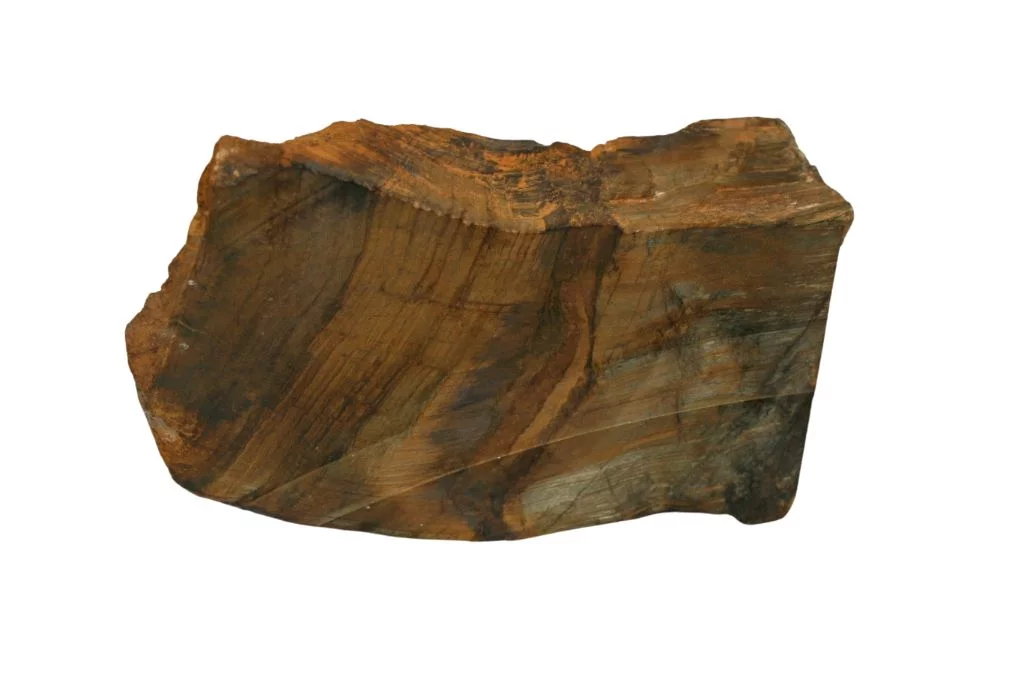Color and Appearance of Binghamite
Binghamite is a striking and unique crystal known for its vibrant color palette. The most common hues range from deep red to rich brown, often with a captivating interplay of these shades within a single specimen. Some pieces may also exhibit hints of orange, creating a warm and inviting appearance. The color distribution is typically uneven, resulting in a mottled or streaked pattern that adds to its visual appeal.
Structure and Composition
This mineral is actually a variety of thomsonite, a zeolite mineral. Binghamite forms in a microcrystalline structure, meaning its crystals are too small to be seen with the naked eye. This structure gives the stone a compact and dense appearance. It often occurs in rounded nodules or as thin seams within its host rock, which is typically basalt.
Notable Physical Characteristics
One of the most distinctive features of Binghamite is its chatoyancy, also known as the cat’s eye effect. This optical phenomenon creates a silky or pearly luster that seems to move across the surface as the stone is rotated. The chatoyancy is due to the presence of parallel fibers or channels within the crystal structure, which reflect light in a unique way.
Unique Aspects of Binghamite
What truly sets Binghamite apart is its rarity and limited geographical distribution. It is found almost exclusively in the Bingham copper mine in Utah, USA, from which it derives its name. The combination of its scarcity, striking color patterns, and chatoyant effect makes Binghamite a highly sought-after stone among collectors and lapidaries. When polished, it can produce stunning cabochons that showcase its beautiful coloration and optical properties, making it a prized material for jewelry and ornamental objects.
Historical and Cultural Significance of Binghamite
Binghamite, a rare and unique stone, holds historical significance primarily in the Midwest United States, particularly in Minnesota where it was first discovered. Named after its discoverer, Alonzo Bingham, this semiprecious gemstone has been cherished by Native American tribes and local communities for generations. Its striking patterns and colors have made it a favorite among artisans and collectors, contributing to the cultural heritage of the region.
Metaphysical Associations
In the realm of crystal healing and metaphysics, Binghamite is believed to possess powerful grounding and stabilizing energies. Practitioners often associate this stone with the root chakra, suggesting it can help balance and align one’s energy centers. Many believe that Binghamite can enhance feelings of security, promote emotional stability, and foster a deeper connection with the Earth. Some metaphysical enthusiasts claim that working with Binghamite can boost creativity and aid in problem-solving by encouraging a more grounded perspective.
Common Uses and Applications
Binghamite finds various applications in both traditional and modern contexts. Jewelry makers prize this stone for its unique appearance, often incorporating it into pendants, earrings, and bracelets. Rock enthusiasts and collectors seek out Binghamite specimens for their rarity and distinctive beauty. In alternative healing practices, Binghamite is sometimes used in meditation, placed on the body during energy work, or carried as a pocket stone for its purported grounding benefits. Some people use Binghamite in home decor, believing it can create a more stable and harmonious environment.
Believed Benefits
Proponents of crystal healing attribute several benefits to Binghamite. It is said to help reduce stress and anxiety by promoting a sense of calm and stability. Some believe it can aid in overcoming fears and phobias by providing a sense of security. Binghamite is also thought to enhance focus and concentration, making it popular among students and professionals. Additionally, its connection to the Earth is believed to help in environmental awareness and conservation efforts. While these benefits are not scientifically proven, many individuals report positive experiences when working with Binghamite in their spiritual or wellness practices.

